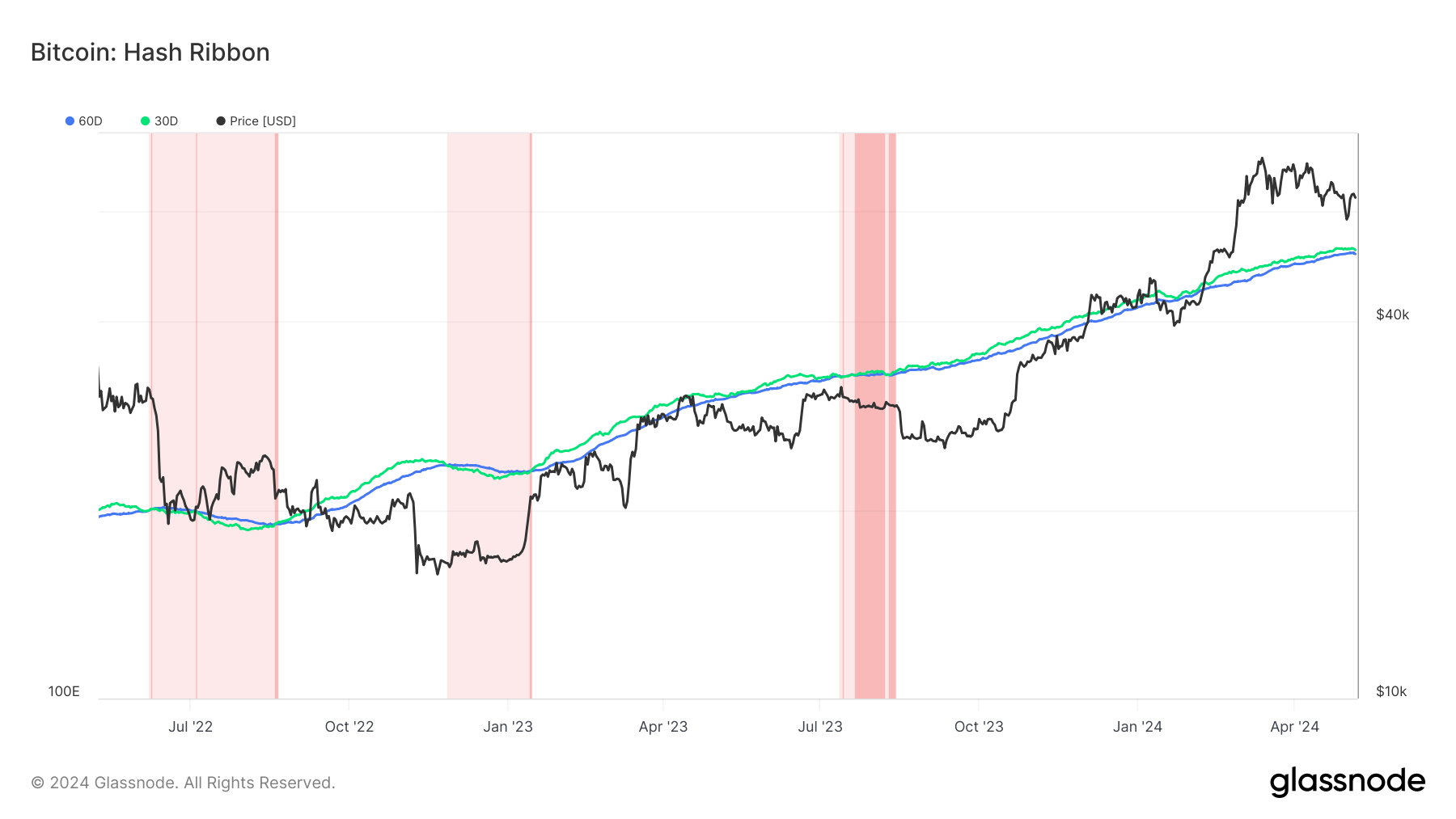Quick Take
Bitcoin’s mining difficulty is on the brink of its most significant downward adjustment since the FTX collapse in December 2022. Newhedge forecasts a reduction of over 4% on May 9, which would mark a substantial trend shift after the Bitcoin halving. The network’s hash rate has already dropped by 10% from its peak on a seven-day moving average.
In March, CryptoSlate accurately predicted this hash rate correction, citing the anticipated disruption caused by reduced miner rewards post-halving. The delay in the correction’s onset is attributed to the elevated fees following the launch of Runes.
Despite these developments, Glassnode’s hash ribbon indicator hasn’t confirmed a miner capitulation event. This metric signals a potential Bitcoin bottom when mining expenses outweigh profits. While the convergence of the 30-day and 60-day moving averages shows an increased risk of miner capitulation, the indicator has not been triggered.

On the other hand, data regarding miner balances suggests a potential resilience within the network. Despite approximately 30,000 BTC being offloaded between October 2023 and March 2024, miner reserves have risen over the last five weeks. This indicates that weaker miners may have already exited the network, alleviating sell-side pressure as the remaining participants maintain their holdings.

The post Bitcoin mining difficulty set for sharpest drop since FTX collapse appeared first on CryptoSlate.
 Bitcoin
Bitcoin  Ethereum
Ethereum  Tether
Tether  XRP
XRP  USDC
USDC  Solana
Solana  TRON
TRON  Lido Staked Ether
Lido Staked Ether  Dogecoin
Dogecoin  Figure Heloc
Figure Heloc  Cardano
Cardano  WhiteBIT Coin
WhiteBIT Coin  Bitcoin Cash
Bitcoin Cash  Wrapped stETH
Wrapped stETH  Wrapped Bitcoin
Wrapped Bitcoin  USDS
USDS  Wrapped eETH
Wrapped eETH  Binance Bridged USDT (BNB Smart Chain)
Binance Bridged USDT (BNB Smart Chain)  Chainlink
Chainlink  Monero
Monero  LEO Token
LEO Token  WETH
WETH  Zcash
Zcash  Stellar
Stellar  Hyperliquid
Hyperliquid  Coinbase Wrapped BTC
Coinbase Wrapped BTC  Ethena USDe
Ethena USDe  Litecoin
Litecoin  Sui
Sui  Avalanche
Avalanche  Hedera
Hedera  sUSDS
sUSDS  Shiba Inu
Shiba Inu  USDT0
USDT0  Dai
Dai  Canton
Canton  Uniswap
Uniswap  PayPal USD
PayPal USD  Mantle
Mantle  Cronos
Cronos  Toncoin
Toncoin  World Liberty Financial
World Liberty Financial  Ethena Staked USDe
Ethena Staked USDe  Polkadot
Polkadot  USD1
USD1  Aave
Aave  Rain
Rain  Bitget Token
Bitget Token 


